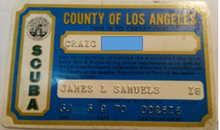My understanding is that back in the day, pretty much everyone was taught on their knees and were overweighted as a result. For those who have taught that way, we have observed students corking and cratering as a result of us overweighting them.
Now in 2011 @boulderjohn and other PADI instructors (@Diver0001, @Peter Guy are two) had an article published in PADI’s training journal. In my book, that is a big deal as PADI is by far the largest agency in the world.
I won’t claim that they were the first instructors to teach neutral buoyancy, but they were the first to get the discussion on a global scale (in my view).
Fortunately, a lot of instructors have adopted teaching this way (unfortunately it is not mandated by all agencies, just RAID and the DIR ones).
I would argue that teaching buoyancy, trim, and zeroing in on the proper weight for an individual immediately are ways in which training today is superior to the best as students learn to perform task loading skills needed to prevent small problems from becoming big problems while . If students are stuck on their knees, then all I can say is “meh”
Now in 2011 @boulderjohn and other PADI instructors (@Diver0001, @Peter Guy are two) had an article published in PADI’s training journal. In my book, that is a big deal as PADI is by far the largest agency in the world.
I won’t claim that they were the first instructors to teach neutral buoyancy, but they were the first to get the discussion on a global scale (in my view).
Fortunately, a lot of instructors have adopted teaching this way (unfortunately it is not mandated by all agencies, just RAID and the DIR ones).
I would argue that teaching buoyancy, trim, and zeroing in on the proper weight for an individual immediately are ways in which training today is superior to the best as students learn to perform task loading skills needed to prevent small problems from becoming big problems while . If students are stuck on their knees, then all I can say is “meh”





